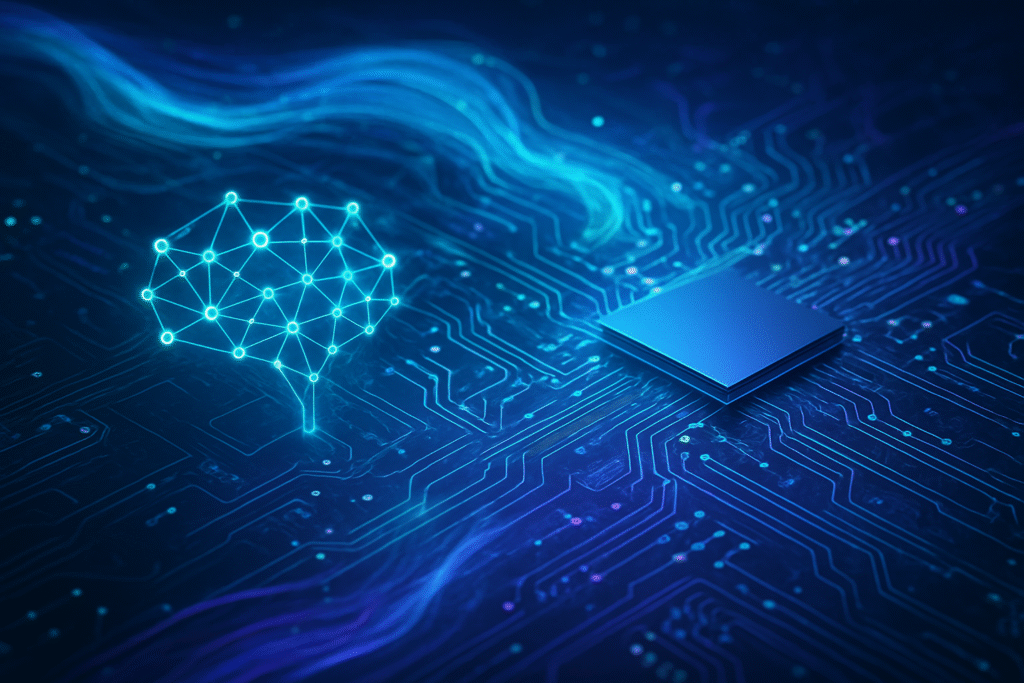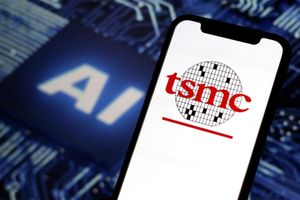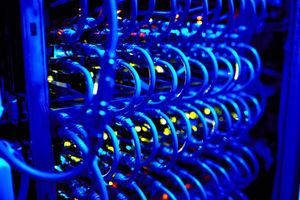
In the rapidly evolving landscape of artificial intelligence, a fundamental shift is underway: the increasingly tight integration of chip hardware and AI software. This symbiotic relationship, often termed hardware-software co-design, is no longer a mere optimization but a critical necessity for unlocking the next generation of AI capabilities. As AI models, particularly large language models (LLMs) and generative AI, grow exponentially in complexity and demand unprecedented computational power, the traditional approach of developing hardware and software in isolation is proving insufficient. The industry is witnessing a holistic embrace of co-design, where silicon and algorithms are crafted in unison, forging a path to unparalleled performance, efficiency, and innovation.
This integrated approach is immediately significant because it addresses the core bottlenecks that have constrained AI's progress. By tailoring hardware architectures to the specific demands of AI workloads and simultaneously optimizing software to exploit these specialized capabilities, developers are achieving breakthroughs in speed, energy efficiency, and scalability. This synergy is not just about incremental gains; it's about fundamentally redefining what's possible in AI, enabling real-time applications, pushing AI to the edge, and fostering the development of entirely new model architectures that were once deemed computationally intractable. The future of AI is being built on this foundation of deeply intertwined hardware and software.
The Engineering Behind AI's New Frontier: Unpacking Hardware-Software Co-Design
The technical essence of hardware-software co-design in AI silicon lies in its departure from the general-purpose computing paradigm. Historically, CPUs and even early GPUs were designed with broad applicability in mind, leading to inefficiencies when confronted with the highly parallel and matrix-multiplication-heavy workloads characteristic of deep learning. The co-design philosophy, however, involves a deliberate, iterative process where hardware architects and AI software engineers collaborate from conception to deployment.
Specific details of this advancement include the proliferation of specialized AI accelerators like NVIDIA's (NASDAQ: NVDA) GPUs, Google's (NASDAQ: GOOGL) Tensor Processing Units (TPUs), and a growing array of Application-Specific Integrated Circuits (ASICs) and Neural Processing Units (NPUs) from companies like AMD (NASDAQ: AMD), Intel (NASDAQ: INTC), and Apple (NASDAQ: AAPL). These chips feature architectures explicitly designed for AI, incorporating vast numbers of processing cores, optimized memory hierarchies (e.g., High-Bandwidth Memory or HBM), and instruction sets tailored for AI operations. Software stacks, from low-level drivers and compilers to high-level AI frameworks like TensorFlow and PyTorch, are then meticulously optimized to leverage these hardware features. This includes techniques such as low-precision arithmetic (INT8, BF16 quantization), sparsity exploitation, and graph optimization, which are implemented at both hardware and software levels to reduce computational load and memory footprint without significant accuracy loss.
This approach differs significantly from previous methods where hardware was a fixed target for software optimization. Instead, hardware designers now incorporate insights from AI model architectures and training/inference patterns directly into chip design, while software developers adapt their algorithms to best utilize the unique characteristics of the underlying silicon. For instance, Google's TPUs were designed from the ground up for TensorFlow workloads, offering a tightly coupled hardware-software ecosystem. Similarly, Apple's M-series chips integrate powerful Neural Engines directly onto the SoC, enabling highly efficient on-device AI. Initial reactions from the AI research community and industry experts have been overwhelmingly positive, recognizing this trend as indispensable for sustaining the pace of AI innovation. Researchers are increasingly exploring "hardware-aware" AI model design, where model architectures are developed with the target hardware in mind, leading to more efficient and performant solutions.
Reshaping the AI Competitive Landscape: Winners, Losers, and Strategic Plays
The trend of tighter hardware-software integration is profoundly reshaping the competitive landscape across AI companies, tech giants, and startups, creating clear beneficiaries and potential disruptors. Companies that possess both deep expertise in chip design and robust AI software capabilities are poised to dominate this new era.
NVIDIA (NASDAQ: NVDA) stands out as a prime beneficiary, having pioneered the GPU-accelerated computing paradigm for AI. Its CUDA platform, a tightly integrated software stack with its powerful GPUs, has created a formidable ecosystem that is difficult for competitors to replicate. Google (NASDAQ: GOOGL) with its TPUs and custom AI software stack for its cloud services and internal AI research, is another major player leveraging co-design to its advantage. Apple (NASDAQ: AAPL) has strategically integrated its Neural Engine into its M-series chips, enabling powerful on-device AI capabilities that enhance user experience and differentiate its products. Other chipmakers like AMD (NASDAQ: AMD) and Intel (NASDAQ: INTC) are aggressively investing in their own AI accelerators and software platforms, such as AMD's Vitis AI, to compete in this rapidly expanding market.
The competitive implications are significant. Major AI labs and tech companies that can design or heavily influence custom AI silicon will gain strategic advantages in terms of performance, cost-efficiency, and differentiation. This could lead to a further consolidation of power among the tech giants with the resources to pursue such vertical integration. Startups in specialized AI hardware or software optimization stand to benefit if they can offer unique solutions that integrate seamlessly into existing ecosystems or carve out niche markets. However, those relying solely on general-purpose hardware or lacking the ability to optimize across the stack may find themselves at a disadvantage. Potential disruption to existing products or services includes the accelerated obsolescence of less optimized AI hardware and a shift towards cloud-based or edge AI solutions powered by highly integrated systems. Market positioning will increasingly hinge on a company's ability to deliver end-to-end optimized AI solutions, from the silicon up to the application layer.
The Broader Canvas: AI's Evolution Through Integrated Design
This push for tighter hardware-software integration is not an isolated phenomenon but a central pillar in the broader AI landscape, reflecting a maturing industry focused on efficiency and real-world deployment. It signifies a move beyond theoretical AI breakthroughs to practical, scalable, and sustainable AI solutions.
The impact extends across various domains. In enterprise AI, optimized silicon and software stacks mean faster data processing, more accurate predictions, and reduced operational costs for tasks like fraud detection, supply chain optimization, and personalized customer experiences. For consumer AI, it enables more powerful on-device capabilities, enhancing privacy by reducing reliance on cloud processing for features like real-time language translation, advanced photography, and intelligent assistants. However, potential concerns include the increasing complexity of the AI development ecosystem, which could raise the barrier to entry for smaller players. Furthermore, the reliance on specialized hardware could lead to vendor lock-in, where companies become dependent on a specific hardware provider's ecosystem. Comparisons to previous AI milestones reveal a consistent pattern: each significant leap in AI capability has been underpinned by advancements in computing power. Just as GPUs enabled the deep learning revolution, co-designed AI silicon is enabling the era of ubiquitous, high-performance AI.
This trend fits into the broader AI landscape by facilitating the deployment of increasingly complex models, such as multimodal LLMs that seamlessly integrate text, vision, and audio. These models demand unprecedented computational throughput and memory bandwidth, which only a tightly integrated hardware-software approach can efficiently deliver. It also drives the trend towards "AI everywhere," making sophisticated AI capabilities accessible on a wider range of devices, from data centers to edge devices like smartphones and IoT sensors. The emphasis on energy efficiency, a direct outcome of co-design, is crucial for sustainable AI development, especially as the carbon footprint of large AI models becomes a growing concern.
The Horizon of AI: Anticipating Future Developments
Looking ahead, the trajectory of hardware-software integration in AI silicon promises a future brimming with innovation, pushing the boundaries of what AI can achieve. The near-term will see continued refinement of existing co-design principles, with a focus on even greater specialization and energy efficiency.
Expected near-term developments include the widespread adoption of chiplets and modular AI accelerators, allowing for more flexible and scalable custom hardware solutions. We will also see advancements in in-memory computing and near-memory processing, drastically reducing data movement bottlenecks and power consumption. Furthermore, the integration of AI capabilities directly into network infrastructure and storage systems will create "AI-native" computing environments. Long-term, experts predict the emergence of entirely new computing paradigms, potentially moving beyond von Neumann architectures to neuromorphic computing or quantum AI, where hardware is fundamentally designed to mimic biological brains or leverage quantum mechanics for AI tasks. These radical shifts will necessitate even deeper hardware-software co-design.
Potential applications and use cases on the horizon are vast. Autonomous systems, from self-driving cars to robotic surgery, will achieve new levels of reliability and real-time decision-making thanks to highly optimized edge AI. Personalized medicine will benefit from accelerated genomic analysis and drug discovery. Generative AI will become even more powerful and versatile, enabling hyper-realistic content creation, advanced material design, and sophisticated scientific simulations. However, challenges remain. The complexity of designing and optimizing these integrated systems requires highly specialized talent, and the development cycles can be lengthy and expensive. Standardization across different hardware and software ecosystems is also a significant hurdle. Experts predict that the next wave of AI breakthroughs will increasingly come from those who can master this interdisciplinary art of co-design, leading to a golden age of specialized AI hardware and software ecosystems tailored for specific problems.
A New Era of AI Efficiency and Innovation
The escalating trend of tighter integration between chip hardware and AI software marks a pivotal moment in the history of artificial intelligence. It represents a fundamental shift from general-purpose computing to highly specialized, purpose-built AI systems, addressing the insatiable computational demands of modern AI models. This hardware-software co-design paradigm is driving unprecedented gains in performance, energy efficiency, and scalability, making previously theoretical AI applications a tangible reality.
Key takeaways include the critical role of specialized AI accelerators (GPUs, TPUs, ASICs, NPUs) working in concert with optimized software stacks. This synergy is not just an optimization but a necessity for the advancement of complex AI models like LLMs. Companies like NVIDIA (NASDAQ: NVDA), Google (NASDAQ: GOOGL), and Apple (NASDAQ: AAPL), with their vertically integrated hardware and software capabilities, are leading this charge, reshaping the competitive landscape and setting new benchmarks for AI performance. The wider significance of this development lies in its potential to democratize powerful AI, enabling more robust on-device capabilities, fostering sustainable AI development through energy efficiency, and paving the way for entirely new classes of AI applications across industries.
The long-term impact of this symbiotic revolution cannot be overstated. It is laying the groundwork for AI that is not only more intelligent but also more efficient, accessible, and adaptable. As we move forward, watch for continued innovation in chiplet technology, in-memory computing, and the emergence of novel computing architectures tailored for AI. The convergence of hardware and software is not merely a trend; it is the future of AI, promising to unlock capabilities that will redefine technology and society in the coming weeks and months.
This content is intended for informational purposes only and represents analysis of current AI developments.
TokenRing AI delivers enterprise-grade solutions for multi-agent AI workflow orchestration, AI-powered development tools, and seamless remote collaboration platforms.
For more information, visit https://www.tokenring.ai/.





